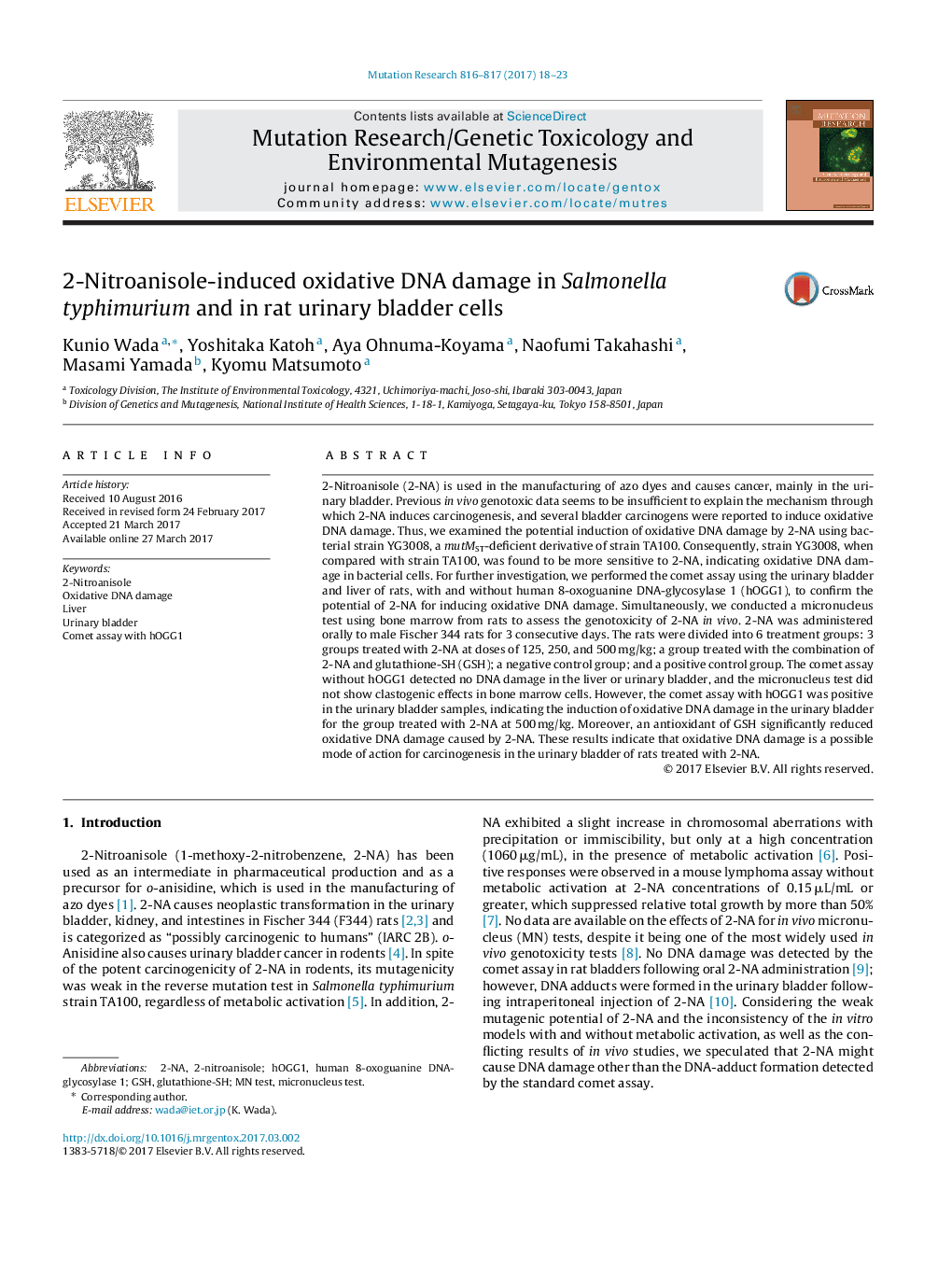| کد مقاله | کد نشریه | سال انتشار | مقاله انگلیسی | نسخه تمام متن |
|---|---|---|---|---|
| 5528806 | 1548554 | 2017 | 6 صفحه PDF | دانلود رایگان |

- Oxidative DNA damage was suggested by the reverse mutation test.
- The comet assay without hOGG1 gave negative results in the urinary bladder.
- The comet assay with hOGG1 produced positive results in the urinary bladder.
- Glutathione-SH reduced oxidative DNA damage caused by 2-NA.
- Oxidative DNA damage is a possible mode of action for urinary bladder carcinogenesis.
2-Nitroanisole (2-NA) is used in the manufacturing of azo dyes and causes cancer, mainly in the urinary bladder. Previous in vivo genotoxic data seems to be insufficient to explain the mechanism through which 2-NA induces carcinogenesis, and several bladder carcinogens were reported to induce oxidative DNA damage. Thus, we examined the potential induction of oxidative DNA damage by 2-NA using bacterial strain YG3008, a mutMST-deficient derivative of strain TA100. Consequently, strain YG3008, when compared with strain TA100, was found to be more sensitive to 2-NA, indicating oxidative DNA damage in bacterial cells. For further investigation, we performed the comet assay using the urinary bladder and liver of rats, with and without human 8-oxoguanine DNA-glycosylase 1 (hOGG1), to confirm the potential of 2-NA for inducing oxidative DNA damage. Simultaneously, we conducted a micronucleus test using bone marrow from rats to assess the genotoxicity of 2-NA in vivo. 2-NA was administered orally to male Fischer 344 rats for 3 consecutive days. The rats were divided into 6 treatment groups: 3 groups treated with 2-NA at doses of 125, 250, and 500Â mg/kg; a group treated with the combination of 2-NA and glutathione-SH (GSH); a negative control group; and a positive control group. The comet assay without hOGG1 detected no DNA damage in the liver or urinary bladder, and the micronucleus test did not show clastogenic effects in bone marrow cells. However, the comet assay with hOGG1 was positive in the urinary bladder samples, indicating the induction of oxidative DNA damage in the urinary bladder for the group treated with 2-NA at 500Â mg/kg. Moreover, an antioxidant of GSH significantly reduced oxidative DNA damage caused by 2-NA. These results indicate that oxidative DNA damage is a possible mode of action for carcinogenesis in the urinary bladder of rats treated with 2-NA.
Journal: Mutation Research/Genetic Toxicology and Environmental Mutagenesis - Volumes 816â817, April 2017, Pages 18-23